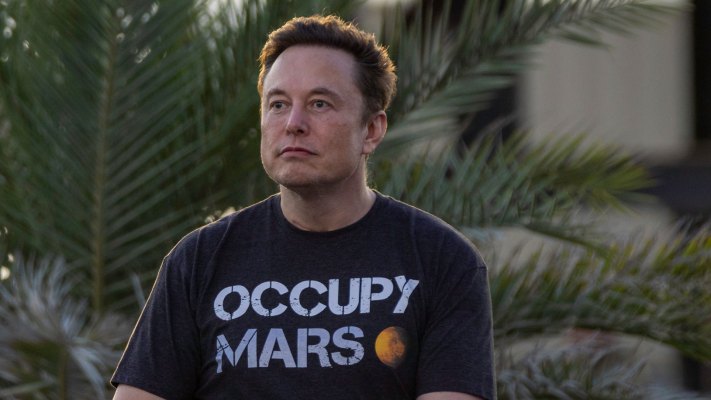Tesla CEO Elon Musk oversaw a 2016 video that overstated the capabilities of the automaker’s driver assistance system, Autopilot, according to internal emails viewed by Bloomberg. The emails show that Musk even dictated the opening tagline of the video that claimed the car drove itself. Earlier this week, a deposition from a senior engineer revealed that the car hadn’t been driving itself and had instead been following a pre-determined route along a high-definition map.
Musk published a blog post on Tesla’s website on October 19, the day before the video went up, that said all Tesla cars from that day forward would ship with the hardware necessary for full self-driving capability. His emails to staff that month discussed the importance of a demonstration drive to promote the system.
Musk’s direct involvement in the video, and subsequent promotion of Tesla vehicles’ abilities to drive themselves, comes at a time when the executive’s reputation and trustworthiness are increasingly at stake. In addition to his Twitter distractions, Musk also promised during Tesla’s Q3 investor call that the automaker would have an “epic end of year,” yet Tesla ended up missing Wall Street Q4 delivery estimates. On top of that, the company’s stock was down 65% in 2022.
Musk is also poised to take the stand this week in a class-action lawsuit from shareholders who say his infamous 2018 tweet claiming that funding had been secured to take the company public — it wasn’t — caused them to lose potentially billions of dollars. The jury will determine whether Musk knowingly, and thus fraudulently, claimed secured funding when it hadn’t been.
‘An amazing Autopilot demo drive’
On October 11, Musk sent an email under the subject line “The Absolute Priority” letting the Autopilot team know that he had canceled his plans for the upcoming weekend to work on the video.
“Just want to be absolutely clear that everyone’s top priority is achieving an amazing Autopilot demo drive,” Musk said in the email, according to Bloomberg. “Since this is a demo, it is fine to hardcode some of it, since we will backfill with production code later in an OTA update,” he wrote, referring to the use of a 3D digital map that the Model X used to follow a pre-determined route.
“I will be telling the world that this is what the car *will* be able to do, not that it can do this upon receipt,” he continued.
Despite that promise, the internal emails show that Musk himself asked the Autopilot team to open the video with the words: “The person in the driver’s seat is only there for legal reasons. He is not doing anything. The car is driving itself.”
Then when Musk promoted the video on Twitter, he wrote: “Tesla drives itself (no human input at all) thru urban streets to highway to streets, then finds a parking spot.”
We won’t be tech snobs and say that getting a vehicle to drive semi-autonomously, even if it is a pre-determined route, wasn’t an impressive feat for an automaker in 2016. But it’s the principle of the thing, of knowing that it wasn’t actually driving itself yet saying that it was. Tesla, some argue, should have disclosed that so as to not mislead customers into thinking its tech was further along than it was. “Tesla also maybe could have mentioned that in the filming of the video, the Model X drove itself into a fence,” according to Ashok Elluswamy, director of Autopilot software at Tesla who testified details about the video.
False and misleading
Elluswamy’s deposition was taken as evidence in a lawsuit against Tesla for a fatal 2018 crash involving former Apple engineer Walter Huang. The lawsuit alleges that errors by Autopilot, and Huang’s misplaced trust in the capabilities of the system, caused the crash.
State and federal agencies and customers have also called out Tesla for falsely promoting the capabilities its driver assistance systems, Autopilot and Full Self-Driving (which is not actually fully self-driving), even though Tesla does advise its drivers to stay alert and focused while the systems are engaged.
Last July, the California Department of Motor Vehicles accused Tesla of falsely advertising its systems, something a handful of Tesla customers also alleged in a September lawsuit against the company.
Additionally, the National Highway Traffic Safety Administration is actively investigating two crashes related to Autopilot. Tesla is also potentially facing a criminal investigation from the Department of Justice over its self-driving claims.
Tesla has defended itself, saying that its “failure to realize a long-term, aspirational goal is not fraud,” according to a November motion to dismiss the complaint from customers suing for deceptive marketing.
In a Twitter Spaces conversation last month, Tesla said its leg up over other automakers as it aims to solve full self-driving is that the car is “upgradeable to autonomy,” something that “no other car company can do.”
